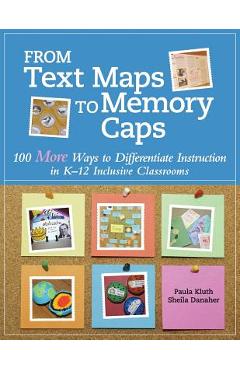Universal Design Daily: 365 Ways to Teach, Support, & Challenge All Learners - Paula Kluth

Detalii Universal Design Daily: 365 Ways
libris.ro
183.23 Lei
203.59 Lei
Education
Paula Kluth
Universal Design Daily: 365 Ways - Disponibil la libris.ro
Pe YEO găsești Universal Design Daily: 365 Ways de la Paula Kluth, în categoria Education.
Indiferent de nevoile tale, Universal Design Daily: 365 Ways to Teach, Support, & Challenge All Learners - Paula Kluth din categoria Education îți poate aduce un echilibru perfect între calitate și preț, cu avantaje practice și moderne.
Preț: 183.23 Lei
Caracteristicile produsului Universal Design Daily: 365 Ways
Comandă Universal Design Daily: 365 Ways Online, Simplu și Rapid
Prin intermediul platformei YEO, poți comanda Universal Design Daily: 365 Ways de la libris.ro rapid și în siguranță. Bucură-te de o experiență de cumpărături online optimizată și descoperă cele mai bune oferte actualizate constant.
Descriere magazin:
If you are interested in learning more about universal design but finding the UDL guidelines or the entire concept of learning a new model overwhelming, this book is for you The UDL guidelines are complex, but implementing universal design for learning should not be. If you are unsure of how to highlight patterns and critical features in daily practice or maximize generalization in lessons, this book will help. Universal Design Daily translates the UDL principles, guidelines and checkpoints for you and provides 365 easy-to-implement ideas that are appropriate for elementary and secondary classrooms.This user-friendly guide was created to help educators learn more about universal design by exploring the practices associated with it. The book features dozens of ideas for providing multiple methods of engagement (e.g., creating personalized learning plans, using movement/brain breaks, engaging in community building), multiple methods of action and expression (e.g., providing assessment choices, encouraging doodling, introducing assistive technology), and multiple methods of representation (e.g., teaching with powerful visuals, introducing films and podcasts, creating costumes).Universal Design Daily also provides several suggestions to help teachers and teams set up for universally-designed curriculum, instruction, and learning environments. One section is dedicated to preparing students and learning spaces and one is focused on UDL-related professional development. This second edition differs from the first in that all of the teaching ideas are organized around CAST\'s (www.cast.org) Universal Design for Learning principles. There are ideas for every single guideline and checkpoint. This edition is also unique in that it includes new material including several suggestions for virtual classrooms and e-learning. This book is designed to support any educator who may not have the time to spend hours on the web, attend a series of workshops, or read a multi-chapter book cover-to-cover in order to plan effective and appropriately challenging lessons for the students in his or her diverse classroom. With 365 ideas to explore, you can focus on just one idea per day, flip through the pages at your own pace, or read the entire book in one sitting. You can use the book as a tool for weekly inspiration or you can keep it on your desktop as a lesson-planning reference tool. No matter how you read it or use it, Universal Design Daily is sure to provide

Produse asemănătoare
Produse marca Paula Kluth

From Tutor Scripts to Talking Sticks: 100 Ways to Differentiate Instruction in K - 12 Classrooms - Paula Kluth
![]() libris.ro
libris.ro
Actualizat in 28/10/2025
319.55 Lei

Universal Design Daily: 365 Ways to Teach, Support, & Challenge All Learners - Paula Kluth
![]() libris.ro
libris.ro
Actualizat in 28/10/2025
183.23 Lei

Just Give Him the Whale!: 20 Ways to Use Fascinations, Areas of Expertise, and Strengths to Support Students with Autism - Paula Kluth
![]() libris.ro
libris.ro
Actualizat in 15/12/2024
175.31 Lei

You\'re Going to Love This Kid!: Teaching Autistic Students in the Inclusive Classroom - Paula Kluth
![]() libris.ro
libris.ro
Actualizat in 15/12/2024
329.9 Lei

From Text Maps to Memory Caps: 100 More Ways to Differentiate Instruction in K-12 Inclusive Classrooms - Paula Kluth
![]() libris.ro
libris.ro
Actualizat in 11/04/2024
337.36 Lei